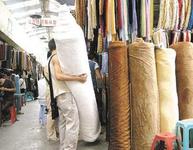Casual Shirts For Men,Men's Casual Shirts,Men's Printed Shirts,Men's Long Sleeve Shirt zhejiang tianjin import and export co.,ltd. , https://www.tianjintextile.com Recently, due to the non-standard labeling of the name and content of fabrics by some textile and apparel manufacturers on the market, unscrupulous businessmen have taken the opportunity to shoddy and shoddy, and deceive consumers. In order to help consumers accurately identify the main real components of apparel fabrics, we now introduce simple identification of common sense for reference by consumers when choosing apparel.
Recently, due to the non-standard labeling of the name and content of fabrics by some textile and apparel manufacturers on the market, unscrupulous businessmen have taken the opportunity to shoddy and shoddy, and deceive consumers. In order to help consumers accurately identify the main real components of apparel fabrics, we now introduce simple identification of common sense for reference by consumers when choosing apparel.
An easy way to identify the composition of apparel fabrics is the combustion method. The practice is to draw a cloth containing the warp and weft yarns at the sewing edge of the garment, ignite it with fire, observe the state of the combustion flame, smell the odor from the burning of the yarn, and look at the burning residue to judge Whether the composition of the fabric labelled on the clothing durability label is consistent with the fabric composition to identify the authenticity of the fabric composition.
One, cotton fiber, hemp fiber cotton fiber and hemp fiber are just near the flame that is burning, burning rapidly, the flame was yellow, blue smoke. The difference between the burning odor and the burning ash is that the cotton burns a paper smell and the hemp burns out the ash odor; after burning, the cotton has very little powder ash, black or gray, and the hemp produces a small amount of grayish white powder ash.
Second, hair fiber and silk wool smoke in the event of fire, burning bubble, burning slower, emitting a burning smell of burnt hair, burned ash and more glossy black spherical particles, a finger that is broken pressure. The silk shrank into a lump in the form of fire, burning slowly, accompanied by buzzing sounds, emitting a burning smell of the hair, and forming a dark brown ash-like ash after burning, the handcuffs being broken.
Third, polyamide and polyester Polyamide nylon fiber name, near the flame that quickly curled into a white gel, melting in the flame dripping and blistering, there is no flame when burning, leaving the flame is difficult to continue burning, emitting celery flavor, After cooling, the light brown melt is not easily crushed. Polyester scientific name of polyester fiber, easy to ignite, near the flame that is melted down, burning side while melting black smoke, a yellow flame, emitting an aromatic smell, burning ash after the dark brown hard block, with your fingers can be crushed.
4. Acrylic and Polypropylene Acrylic name Polyacrylonitrile fiber, softened and shrank near the fire, black smoke after the fire, white flame, rapid burning from the flame, exhaled the bitter taste of the fire, and the burned ash is irregular black hard block. , Handcuffs are fragile. Polypropylene Polypropylene fiber, near the flame that is melted, flammable, slowly burning from the fire and black smoke, the flame is yellow on the top, the lower end of the blue, emits the flavor of oil, burned after the ash is a hard round yellow-brown particles, easy to handcuffs broken.
V. Vinylon and Chrysene Vinylon Polyvinyl formal fiber, not easy to ignite, near the flame melting shrink, burning a little flame at the top, until the fiber is melted into a jelly flame becomes larger, there is thick black smoke, smell of bitterness After the combustion, black bead-like particles remain, which can be crushed with your fingers. Lactose fiber name PVC fiber, hard to burn, away from the fire that is extinguished, the flame was yellow, the lower end of the green white smoke, irritating pungent pungent sour, burned after the ashes are dark brown irregular hard blocks, fingers are not easy to smash.
Sixth, spandex and fluoro-filament Spandex science name poly-esterification fiber, near the edge of the burning edge of the fire, the flame when burning blue, leaving the fire to continue to ignite, emit a special irritating odor, burning after the ash is soft fluffy Black and gray. Teflon scientific name PTFE fiber, iso organization called it fluorite fiber, near the flame only melt, difficult to ignite, do not burn, the edge of the flame was blue and green carbonization, melting and decomposition, gas toxic, the melt is hard round black Beads. Fluorofibers are commonly used in the textile industry to make high-performance sewing threads.
Seven, viscose fiber and cuprammonium fiber viscose fiber flammable, burning fast, yellow flame, burning paper smell, burn less ash, was smooth twisted ribbon light gray or gray fine powder. Copper ammonium fiber is commonly known as tiger kapok. It burns near the flames, and it burns fast. The flame is yellow and emits ester sourness. After burning, there is very little ash. There is only a little grey black ash.